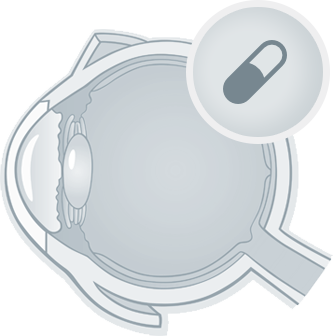Inicio / SPECIALISATIONS / GLAUCOMA / NON-PENETRATING DEEP SCLERECTOMY (NPDS)
Filtration procedures aim to decrease intraocular pressure creating an alternative route for the flow of aqueous humour, the fluid at the front of the eye (known as anterior chamber). The decrease in intraocular pressure aims to reduce the progression of the damage to the optic nerve.
Given it is a filtration surgery, its basis and aim are similar to those of trabeculectomy, and they share common surgical steps. In fact, the initial steps of dissecting the conjunctiva (the outer cover of the eye) and creating a small scleral flap are very similar. Substances that help to decrease excessive scarring of the ocular tissues can also be used. However, the main characteristic of this procedure is the subsequent removal of a second deeper scleral flap and the absence of direct penetration into the anterior chamber of the eye, thus naming the technique and providing an adequate safety profile.
Thus, in NPDS the aqueous humour leaves the anterior chamber through a fine membrane between the cornea and the iridocorneal angle by a phenomenon known as percolation. In the deepest area of the surgical area a small implant can be placed contributing to the proper functioning of the surgery.
Indeed, the final result is similar to that of a trabeculectomy: the aqueous humour is directed in a controlled manner to the area under the conjunctiva and on top of the choroid, creating a filtering bleb after closing the layers of the eye that have been manipulated. It is very important to maintain the integrity of this bleb to ensure the success of the surgery in the medium and long term.
Usually, NPDS is performed under loco-regional anaesthesia and can be carried out in combination with cataract surgery in the same surgical procedure.
It is important to highlight that this type of intervention requires a thorough and comprehensive follow-up, generally including several follow-up visits in the first few weeks after the surgery. The structures of eye are examined as well as the shape and functioning of the filtering bleb, ensuring the connection is still permeable, with an adequate filtration (nor too high nor too low) that avoids wide swings in intraocular pressure measurements.
Occasionally, it is necessary to manipulate the area of the surgery, laser treatment or use additional local drugs to avoid the scarring process, as it would decrease the success of the intervention.
